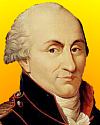
On 14 Jun 1736, Charles-Augustin de Coulomb was born, whose contributions to the measurement of electrical charge were recognized by the naming of the unit of electric charge after him.
A biography of Charles-Augustin de Coulomb in Pioneers of Electricity (1890) is very informative on the diverse interests of this remarkable scientist. Among the interesting facts you probably did not know about him was that he was sent to the prison of the Abbaye over a report on a canal!
Of course, as you would expect, his introduction of measurement to the study of electrical charge is a large part of this biography of this remarkable person - another scientist about whom you can learn some background you perhaps would never have otherwise known he studied (for example, about the sap of poplar trees!).

On 14 Jun 1946, the Scottish engineer John Logie Baird. He was the first man to televise outline pictures of objects, in 1924. The following year he screened recognizable human faces. Today's book pick is: Television And Me: The Memoirs of John Logie Baird, by John L Baird, an autobiography by this pioneering TV engineer. He writes with blunt candour and caustic wit about the wild escapades of his early business career and later troubled relationship with Lord Reith and the fledgling television broadcasts. With much new material, including a recently discovered final chapter by his wife, this heavily illustrated edition of his autobiography gives us a very human portrait of one of the creators of the modern world.
It is available from Amazon, typically about New from $15.53. Used from $3.50. (As of earlier time of writing - subject to change.)
 | The sciences are monuments devoted to the public good; each citizen owes to them a tribute proportional to his talents. While the great men, carried to the summit of the edifice, draw and put up the higher floors, the ordinary artists scattered in the lower floors, or hidden in the obscurity of the foundations, must only seek to improve what cleverer hands have created. |
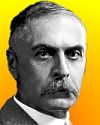 | The reactions follow a pattern, which is valid for the blood of all humans... Basically, in fact, there are four different types of human blood, the so-called blood groups. The number of the groups follows from the fact that the erythrocytes evidently contain substances (iso-agglutinogens) with two different structures, of which both may be absent, or one or both present, in the erythrocytes of a person. This alone would still not explain the reactions; the active substances of the sera, the iso-agglutinins, must also be present in a specific distribution. This is actually the case, since every serum contains those agglutinins which react with the agglutinogens not present in the cells—a remarkable phenomenon, the cause of which is not yet known for certain. |
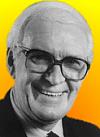 | Our brains seem to be organised to make random comparisons of the contents of our memories. Daydreaming allows the process to go into free fall. Suddenly, there is a new idea, born with intense excitement. We cannot organise this process but we can distort or even defeat it. [Commenting that creativity is not a method that can be learnt and taught.] |
| Before you look at today's web page, see if you can answer some of these questions about the events that happened on this day. Some of the names are very familiar. Others will likely stump you. Tickle your curiosity with these questions, then check your answers on today's web page. | |
| Births | |
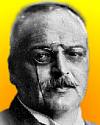 | On 14 Jun 1864, the German psychiatrist was born. The disease named after him is very well-known. In Nov 1901, a 51-year old female patient with signs of dementia had been admitted to the Frankfurt hospital where this doctor was working. At a meeting of German psychiatrists on 3 Nov 1906, he reported on this patient. The title of his lecture was Über eine eigenartige Erkrankung der Hirnrinde (On a peculiar disorder of the cerebral cortex). He described presenile dementia—a progressive, degenerative disorder that affects the brain. The first symptoms are loss of memory, inability to think and understand and gradual behaviour changes. Death follows in from 8 to 20 years. Can you name this psychiatrist? |
 | Charles-Augustin de Coulomb was born 14 Jun 1736, the French physicist who is best known for the formulation of Coulomb’s law. In 1777, he invented a torsion balance which he subsequently modified for electrical measurements. He also did research on friction of machinery, on windmills, and on the elasticity of metal and silk fibres. What is Coulomb's law? Deaths |
| Deaths | |
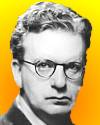 | John Logie Baird, a Scottish engineer (1888-1946), was the first man to televise outline pictures of objects (1924) and recognizable human faces (1925). In 1926, he demonstrated TV for moving objects at the Royal Institution, London. By 1928, he showed his attempt at colour television. The British Broadcasting Corporation (BBC) formed a committee in 1936 to compare his system with a competing system of Marconi Electric and Musical Industries. It was the Marconi-EMI all electronic system that the BBC adopted in Feb 1937. Baird also worked on stereoscopic television. He even recorded experimental silent moving 30-line images, which have been played back with modern technology, and posted on YouTube! What medium did Baird use to record his 30-line moving images? |
| Events | |
 | On 14 Jun 1972, a well-known insecticide was banned from use in the U.S. after 31 Dec 1972, by executive order of the Environmental Protection Agency. What insecticide was banned in 1972? |
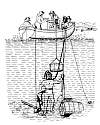 | On 14 Jun of a certain year, the first U.S. patent for a practical underwater diving suit was issued to Leonard Norcross of Dixfield, Me. Calling it a “water-dress,” he designed an airtight rubber outfit with a brass helmet connected via a rubber hose to an air pump on a boat. To reduce buoyancy, the feet were weighted with lead shot. In what decade was this patent issued? |
 | In 1892, a number of patents were issued to the same man for a variety of inventions: U.S. Nos. 476,983 to 476,993. They were for, respectively, a “Pyromagnetic Generator,” an “Expansible Pulley,” a “Trolley for Electric Railways,” a “Means for "Propelling Electric Cars,” an “Electric Locomotive,” a “Lightning-Arrester'', a “Conductor for Electric Railways,” an “Electric Meter'', a “Method of and Apparatus for Separating Ores'', an “Incandescent Electric Lamp” and an “Electric-Arc Lamp.” Can you name the inventor? |
Fast answers for the previous newsletter for June 13: Maxwell’s measurement of the speed of propagation of an electromagnetic field is approximately the same as the speed of light. • Thomas Young helped decipher the Rosetta Stone • sulphuric acid • radon • anthrax • Neptune, to became the first man-made object to leave our Solar System.
 If you enjoy this newsletter, the website, or wish to offer encouragement or ideas, please send feedback by using your mail reader Reply button.
If you enjoy this newsletter, the website, or wish to offer encouragement or ideas, please send feedback by using your mail reader Reply button. Your click on a Facebook, StumbleUpon, or other social button on the site webpages is also a welcome sign of appreciation. Thank you for using them.
© This newsletter is copyright 2020 by todayinsci.com. Please respect the Webmaster's wishes and do not put copies online of the Newsletter — or any Today in Science History webpage. (If you already have done so, please remove them. Thank you.) Offline use in education is encouraged such as a printout on a bulletin board, or projected for classroom viewing. Online, descriptive links to our pages are welcomed, as these will provide a reader with the most recent revisions, additions and/or corrections of a webpage. For any other copyright questions, please contact the Webmaster by using your mail reader Reply button.
--
If you do not want to receive any more newsletters, Unsubscribe
To update your preferences and to unsubscribe visit this link
Executive Real Estate Business Class
-
"It was like a man with wings. It wasn't like anything you'd see on TV or in a monster movie." ...
About the publisher
Search This Blog
Blog Archive
-
▼
2021
(585)
-
▼
June
(64)
- On This Day for June 30 - Night of the Long Knives...
- Newsletter for Wednesday 30 June.
- On This Day for June 29 - London's Globe Theatre d...
- Newsletter for Tuesday 29 June.
- On This Day for June 28 - Assassination of Archduk...
- Newsletter for Monday 28 June.
- On This Day for June 27 - Yen made official moneta...
- Newsletter for Sunday 27 June.
- On This Day for June 26 - Opening of CN Tower, Bab...
- Newsletter for Saturday 26 June.
- On This Day for June 25 - Korean War begun, Antoni...
- Newsletter for Friday 25 June.
- On This Day for June 24 - Russia invaded by Napole...
- Newsletter for Thursday 24 June.
- On This Day for June 23 - Battle of Bannockburn, C...
- Newsletter for Wednesday 23 June.
- On This Day for June 22 - Mutiny against Henry Hud...
- Newsletter for Tuesday 22 June.
- On This Day for June 21 - Japanese forces defeated...
- Newsletter for Monday 21 June.
- On This Day for June 20 - Casket Letters found, Ho...
- Newsletter for Sunday 20 June.
- Tonight at 8/7c: Watch ‘Fight the Power’
- On This Day for June 19 - Rosenbergs executed for ...
- Newsletter for Saturday 19 June.
- On This Day for June 18 - War of 1812 begun, Sir P...
- Newsletter for Friday 18 June.
- On This Day for June 17 - Arrest of O.J. Simpson, ...
- Newsletter for Thursday 17 June.
- On This Day for June 16 - First woman in space, Jo...
- Newsletter for Wednesday 16 June.
- On This Day for June 15 - Magna Carta sealed by Ki...
- Newsletter for Tuesday 15 June.
- On This Day for June 14 - First prisoners at Ausch...
- Newsletter for Monday 14 June.
- On This Day for June 13 - Historic meeting between...
- Newsletter for Sunday 13 June.
- On This Day for June 12 - Election of Boris Yeltsi...
- Newsletter for Saturday 12 June.
- Listen Now! Blindspot: Tulsa Burning Podcast
- On This Day for June 11 - Oklahoma City bomber exe...
- Newsletter for Friday 11 June.
- On This Day for June 10 - First “witch” hanged in ...
- Newsletter for Thursday 10 June.
- On This Day for June 9 - Landslide reelection vict...
- Newsletter for Wednesday 9 June.
- On This Day for June 8 - Michelangelo's David inst...
- Newsletter for Tuesday 8 June.
- Action required: Update your HistoryExtra password
- On This Day for June 7 - Lateran Treaty ratified, ...
- Newsletter for Monday 7 June.
- On This Day for June 6 - Normandy Invasion begun, ...
- Newsletter for Sunday 6 June.
- On This Day for June 5 - Start of the Six-Day War,...
- Newsletter for Saturday 5 June.
- On This Day for June 4 - Dunkirk evacuation ended,...
- Newsletter for Friday 4 June.
- Tonight: ‘Alone’ Returns at 9:30/8:30c
- On This Day for June 3 - Pro-democracy protest in ...
- Newsletter for Thursday 3 June.
- On This Day for June 2 - Elizabeth II crowned quee...
- Newsletter for Wednesday 2 June.
- On This Day for June 1 - Debut of CNN, Morgan Free...
- Newsletter for Tuesday 1 June.
-
▼
June
(64)
-
Blogroll
-
About
HistoryFact










I liked your work and, as a result, the manner you presented this content about Linear Motor Magnetics.It is a valuable paper for us. Thank you for sharing this blog with us.
ReplyDelete